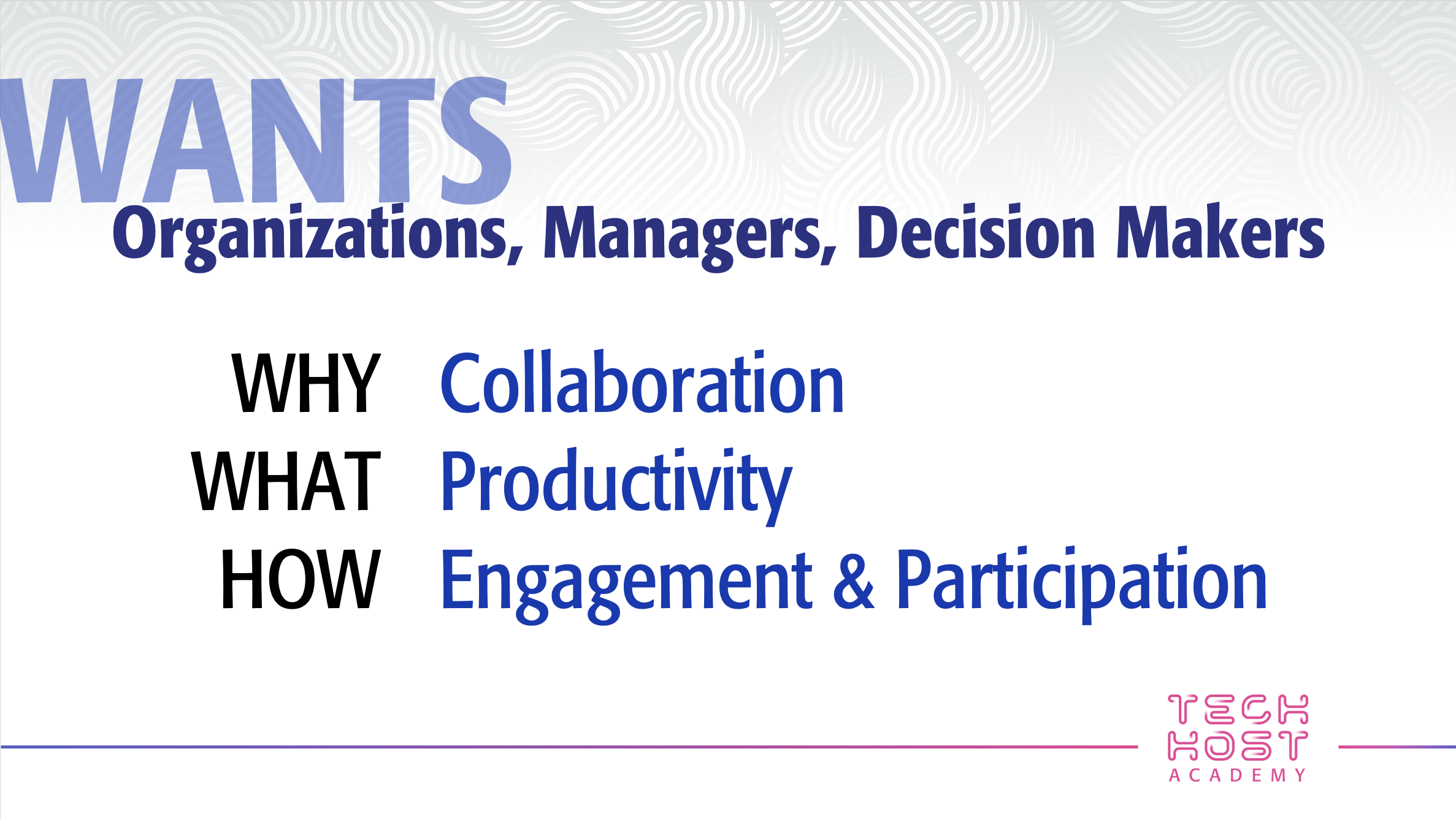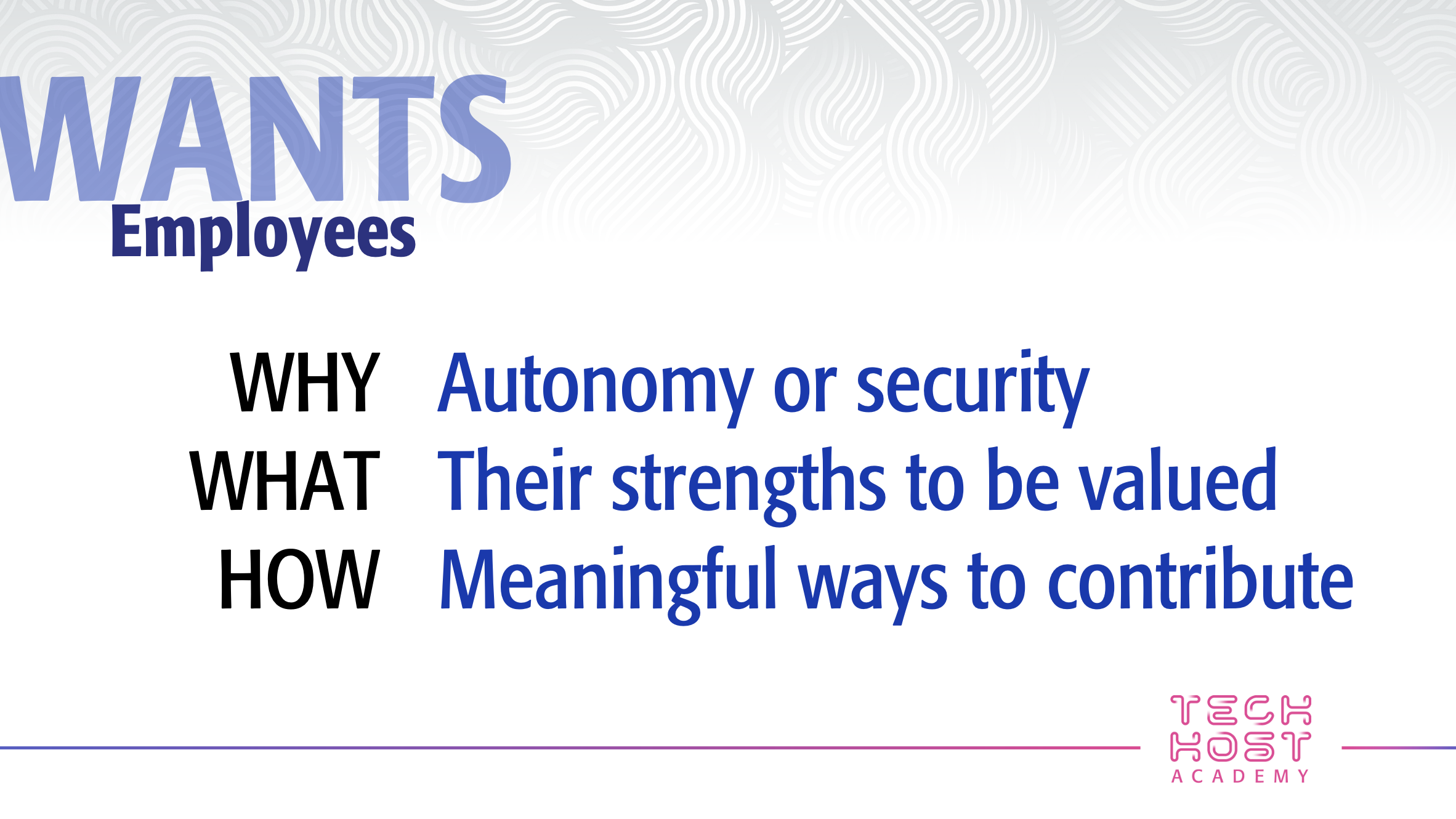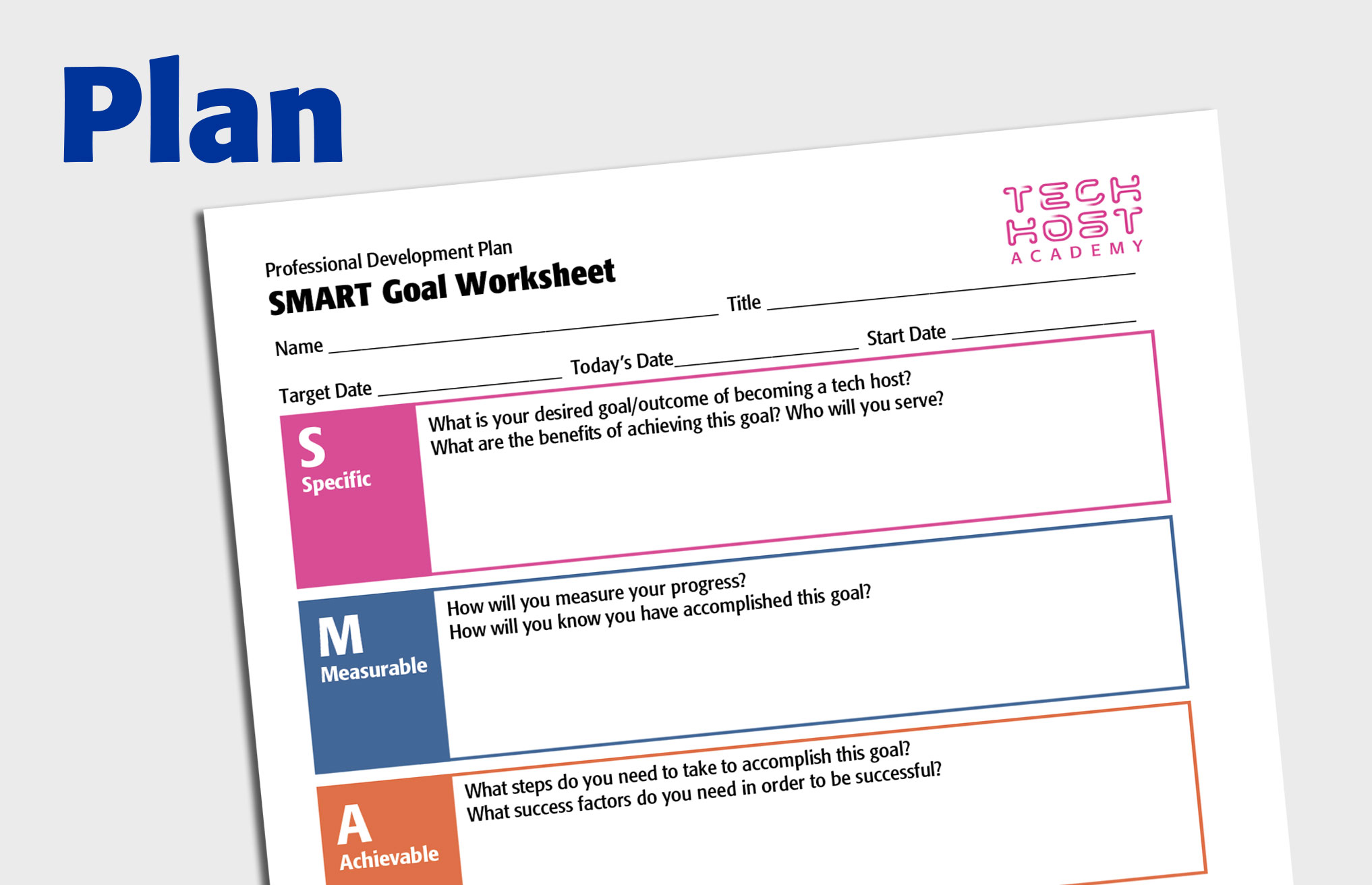Managers vs. Employees: How do we align to the wants and needs of both?
When I first took a job at a leadership development firm, I quickly realized my potential. After working on a change management team, I learned about the importance of creating systems where others can live out their potential.
Over the years I have enjoyed exploring what managers and employees want and need, how they differ, how they can align, and I most recently discovered how tech hosting fits into the puzzle.
Have you ever wondered...
Does my boss or other higher-ups in my organization know and appreciate what I do?
Does anyone outside of my team know what we do in our meetings?
Or have you ever asked yourself:
How can I show up in a way that brings value and bring out the best in others?
Well, if you are a lifelong learner like me, you might be curious about how becoming a tech host:
- can complement your current role,
- will help you be seen by your boss and recognized by your co-workers, and
- add value to your professional development.
What managers and organizations need and want
When it comes to organizations, their managers, and decision makers, it makes sense that they would want...
Let’s break that down a bit.
Note: I am intentionally using the terms need and want interchangeably here because they vary for each organization and person.
An organization’s WHY is based on their purpose and why they formed.
Do you know your organization’s vision by heart? Do you see yourself as part of that vision?
The WHAT is focused around productivity. An organization's financial success is based on how productive its employees are. It’s as simple as that.
To get there, this requires the HOW: Engagement and participation.
Engaged employees will yield higher productivity and you can guess how disengaged or even unengaged employees can affect the bottom line.
Did you know there is a difference between disengaged and unengaged employees?
EWEJI, Oyeniyi, a learning and development advisor from Nigeria explains the difference in this article.
And this all comes down to the WHY. In order to have the HOW and the WHAT, an organization must have collaboration among it's employees.
This is where rubber hits the road. The conditions need to be right.
Where the rubber meets the road
Imagine a plane landing and how that feels when the weather conditions aren’t good—the pilot is struggling and may be going too fast. You can literally feel your rump leave your seat if the wheels don’t stay on the runway.
How does that compare to a race car just starting off with full contact on the pavement and clear path ahead?
How we work together and how successful we are depends on learning how to work together. And that’s complex! People are complex with their different working and communication styles, personal values, and behaviors, not to mention all of us being thrown into a mixed-up bowl of soup when it comes to rules, policies, and procedures. And I don’t have to tell you what a challenge it is to our mental well-being when we look at what’s going on in the world around us.
It’s hard to stay focused and be productive when we are juggling so many things. The how can be hard. But it’s not impossible. In fact, it’s how we show up as individuals that make up our culture and how we experience our work life.
A deeper dive into what managers and organizations need and want
WHY: Collaboration
Organizations are groups of people that rely on the ability for its employees to work together to be productive in order to meet their purpose. We all know the intrinsic benefits of working together but it’s working together on a common goal that helps the organization execute its strategy.
WHAT: Productivity
Productivity has a direct impact on the bottom line. Financial success depends on it and decisions are made based on quantitative data and metrics.
HOW: Engagement & Participation
The organization’s maturity depends on its understanding of the importance and how to motivate employees to execute on the strategy. That requires employees to be engaged and participate. How an organization does that defines it’s culture. It’s up to the leaders in the organization to model the way and create systems to enable employees to thrive.
What employees need and want
As an employee, take a moment to consider, what your needs are.
WHY have you chosen the role that you are in?
WHAT do you need in order to be successful?
HOW can your need(s) would be met by your manager or organization?
A deeper dive into what employees need and want
WHY: You have chosen the role you are in…what does it provide for you?
This is different for each individual. How a person shows up is a reflection of their values, beliefs, needs and desires. Everyone’s “why” is different. Some are motivated by security while others value autonomy. Which makes it hard for organizations to compensate and recognize employees equally or fairly.
WHAT: An employee's strengths and skills need to be valued
Employees are often hired based on if their skills and strengths align with a job description. However, once in the position, the person brings their whole self. If a company can recognize the additional strengths, needs and desires of a person, their investment will increase and the potential for that person to invest back in the organization can have a profound, and often, immeasurable impact.
HOW: Organizations provide a structure that allows employees to contribute in meaningful ways
When individuals can identify their strengths and what motivates them, they need a system that aligns and that they can thrive in. How that system is set up will ultimately determine the success of the individual and will impact their productivity and the organization’s bottom line.
Organizations are formed from visions. How they execute is dependent on what they focus on: problems or desires. At Tech Host Academy, we explore the difference and apply Appreciative Inquiry to the entire tech hosting lifecycle.
Remember...
Organizations rely on managers to figure out how to get the most out of their employees. Some are requiring more time in the office. While others are embracing the hybrid and remote model to save on expenses and to empower their employees.
What is your preference?
Would you rather be in the office or work from home? Personally, because I’m immunocompromised, I need to work from home as much as possible. Luckily I enjoy it and I believe we can accomplish even more online than we can in person by the way we design online sessions. I also recognize that lockdown was very hard for some people. They need more human interaction.
There can be a balance. But it will require managers to focus on what motivates employees and helps them focus on their contribution to the organization's purpose. While some teams may unanimously agree on working remotely or everyone be the office, it’s most likely that there is a mix. Think of all the changes the pandemic brought. Maybe you or someone you know moved away during the pandemic. It may be inconvenient or even impossible to move back.
Hybrid can be the solution for now. I state “for now” because not all groups that meet online have mastered it. Not all meeting rooms are set up for hybrid. And not everyone in the room is aware that it takes a solid approach to design meetings to ensure all voices are heard. This already took effort in in-person meetings. Now with a lack of accessibility when it comes to technology, more inequities are apparent.
It’s not harder to make this work, but it will require us to work differently.
So what can we do as employees to work to our strengths, enjoy the work we are doing and demonstrate our value? And what does that have to do with tech hosting? How do we bridge the gap? As an employee, you can make the first step.
At Tech Host Academy we offer professional development tools to help you: Identify, Plan and Execute.

Identify Your Why
Using visual tools, we explore our strengths, whom we want to serve, and what gives meaning to our work and motivates us. Visual thinking is a powerful way to access the creative centers of our brain so that we may apply new solutions to reoccurring problems. Ever heard the phrase, “What got us here won’t get us there”? Working with visuals encourages sense-making. 
Plan Your How
Professional development tools like setting SMART goals are a good way to take all that great thinking and exploration and apply it to our organization’s goals and strategies. Asking your boss about their vision and their expectations of the team is a great way for you to find and fill gaps based on your strengths and skills.
Execute The What
You’ve done the inner work and researched where you can show up to bring the most value, now you can take that information to make a business case to your boss and start implementing your own strategy that aligns with that of your organization.
While the wants and needs of managers and it's employees may differ, these gaps can be filled. And tech hosting allows us to easily show up, in ways that we already are, but with a different purpose: To support the needs of the organization, and others on the team, to have agency over our roles, and satisfy our own needs. All while making meetings smoother.
At Tech Host Academy, we provide the coaching, frameworks, and tools to help you bridge those gaps all while tech hosting. It's a great solution with fast and consistent results in your professional development.
Want a behind-the-scenes pass to learn what it takes to be a professional tech host?
Check out the free training webinar:
How to Create Thriving Online Environments
without needing to Be a Tech Geek
No offense tech geeks! We love you!

